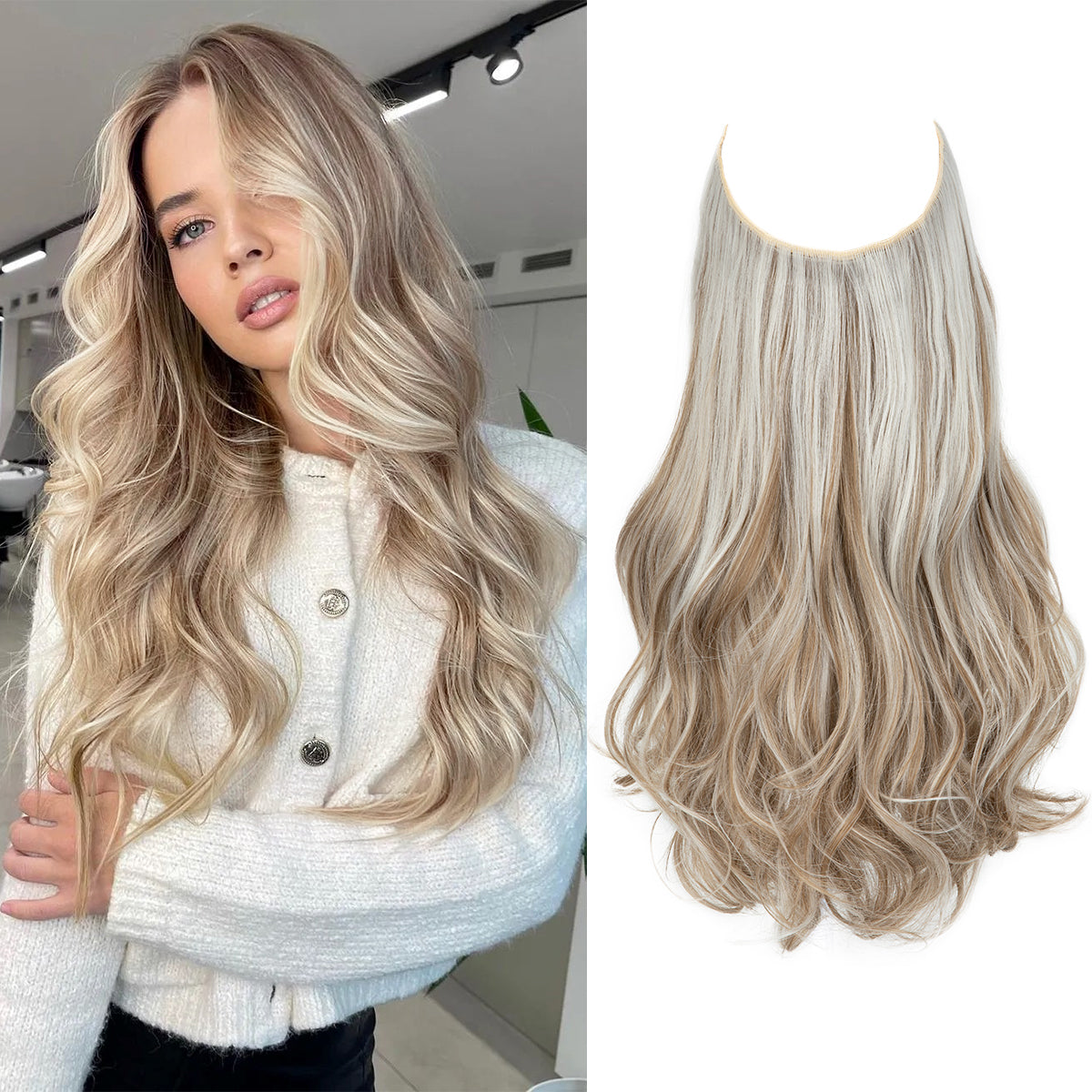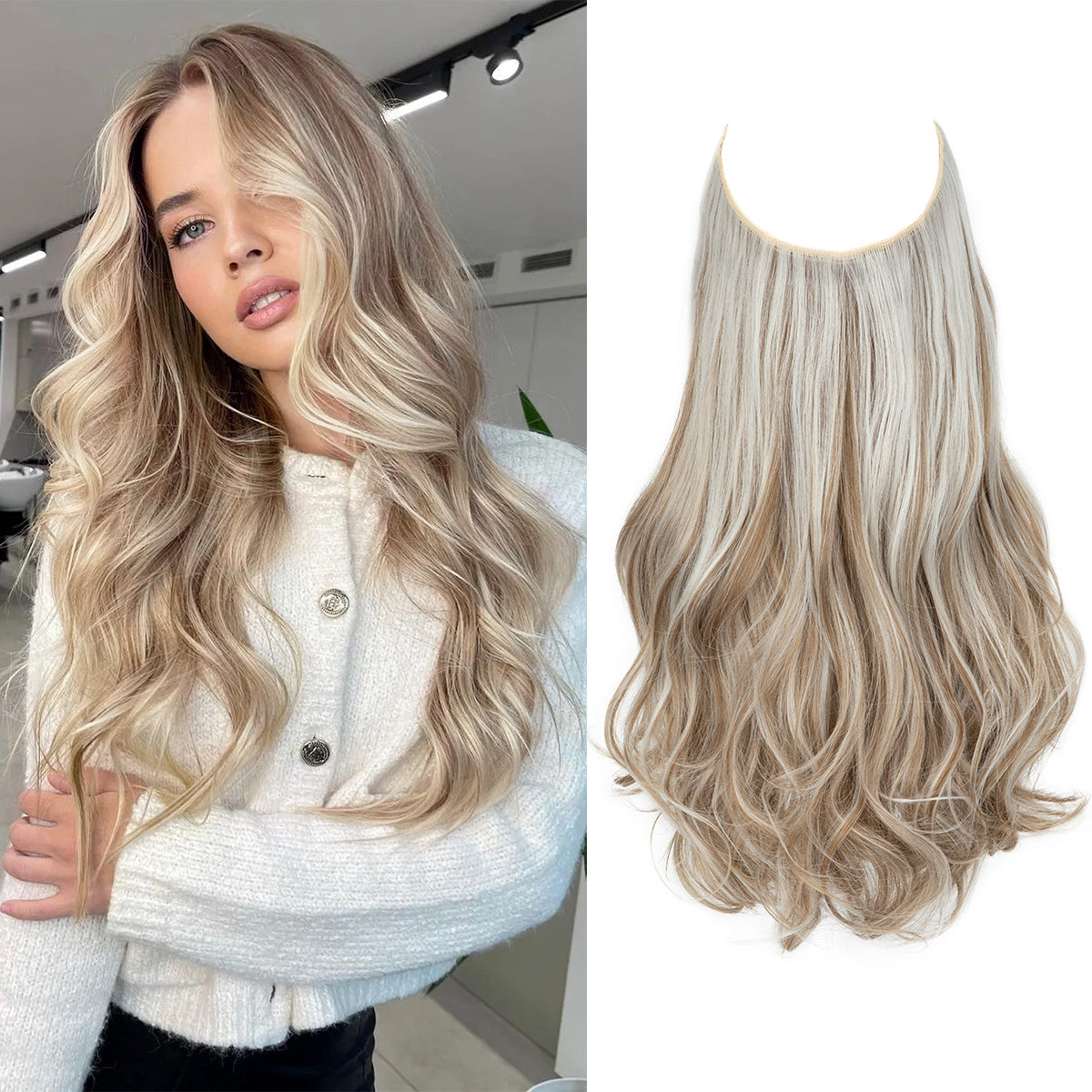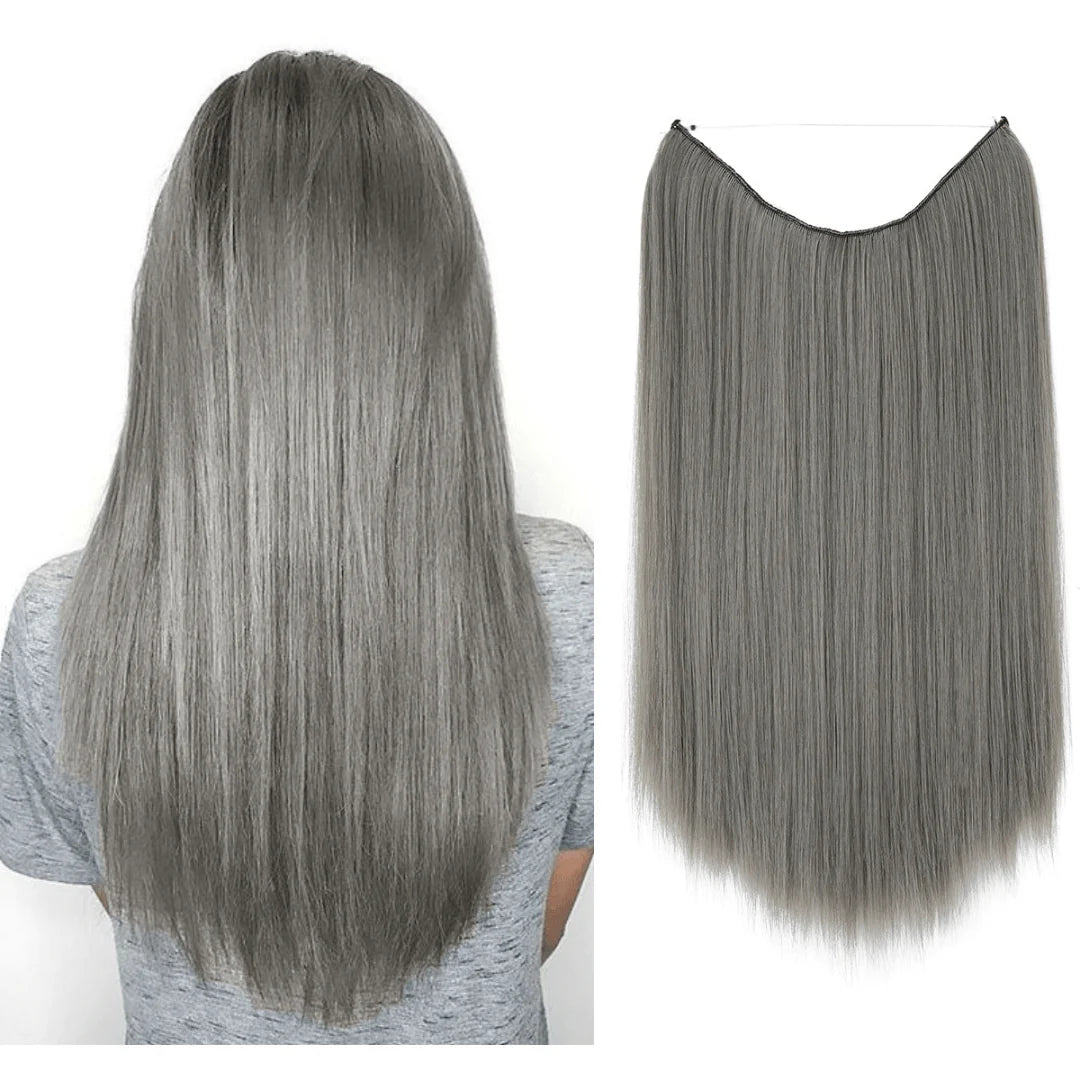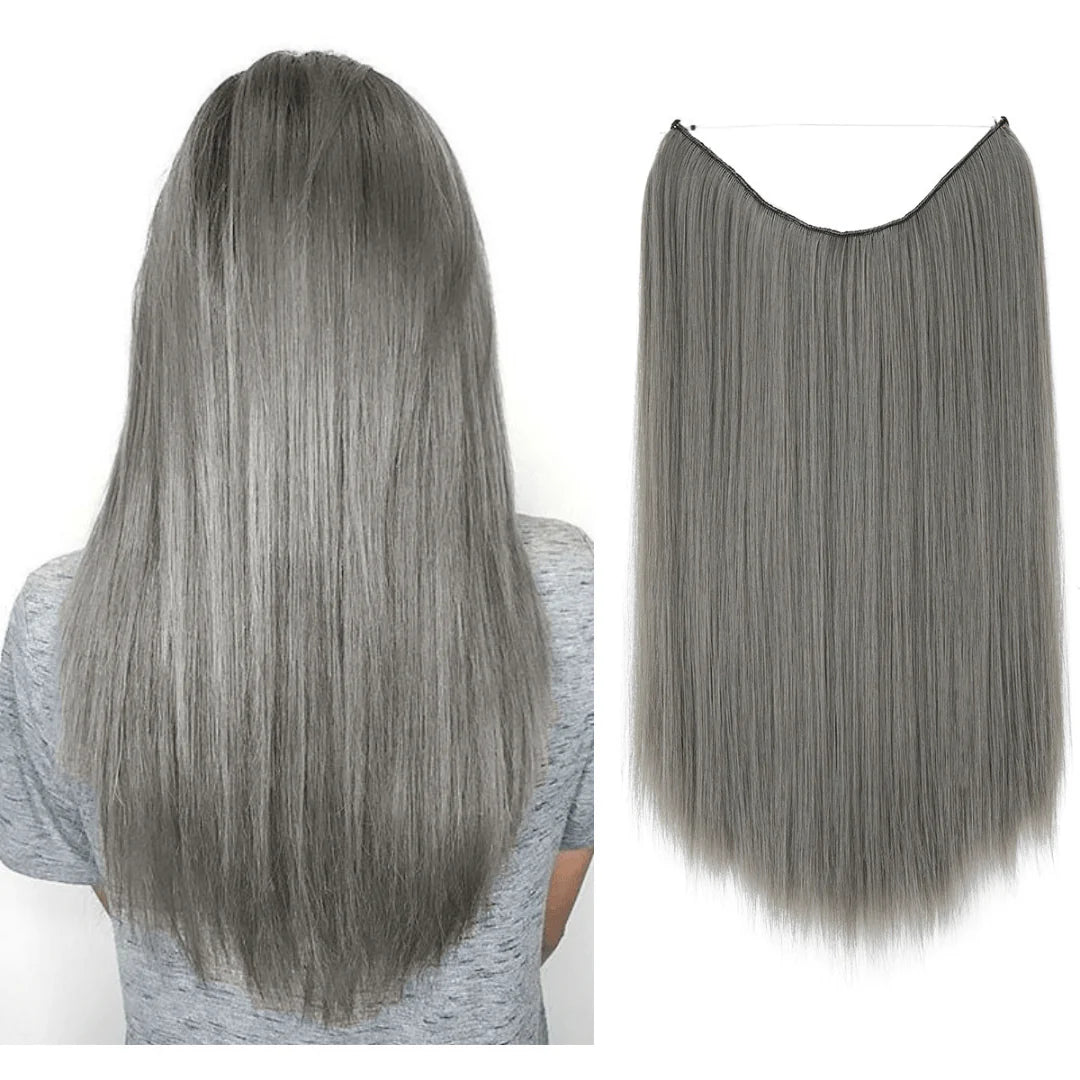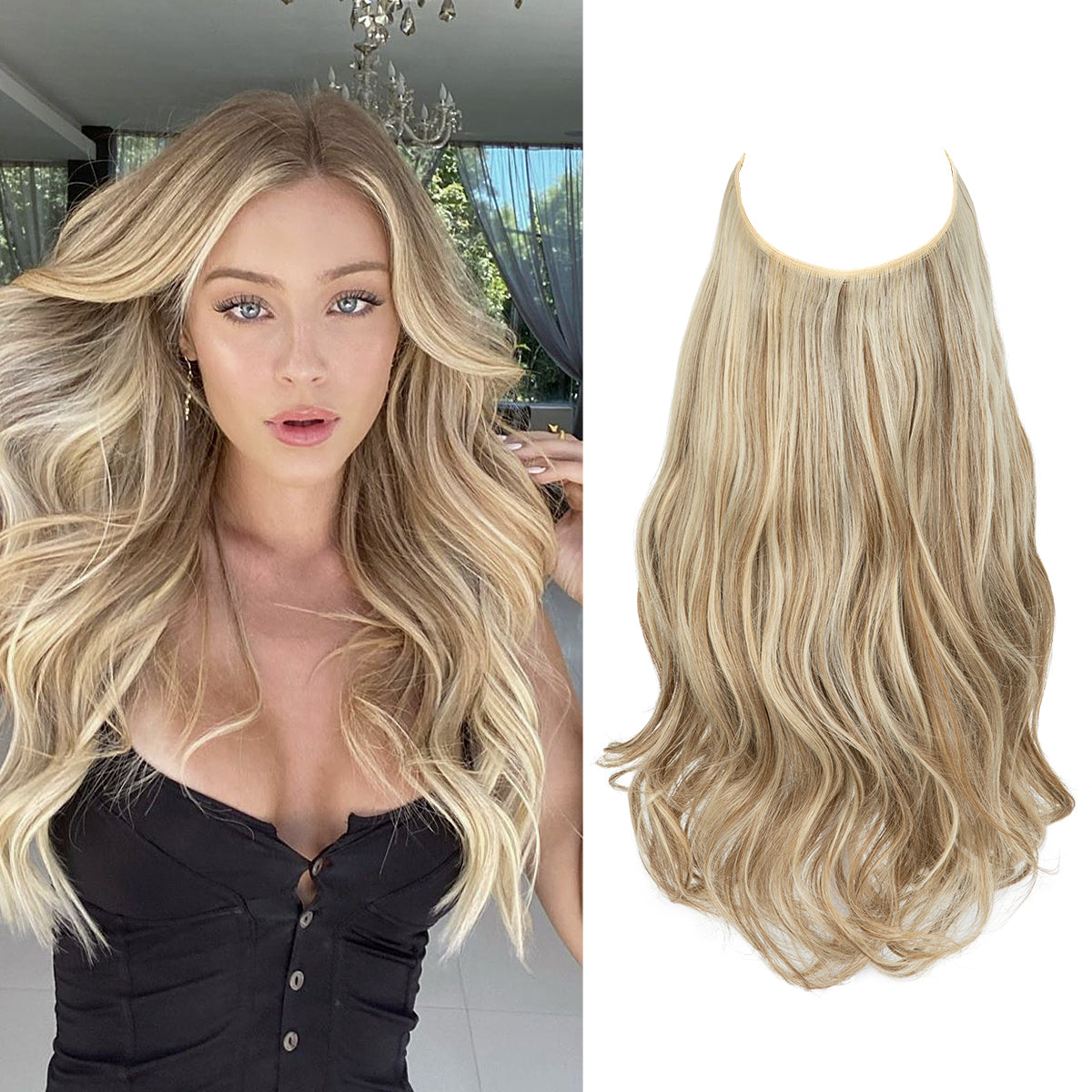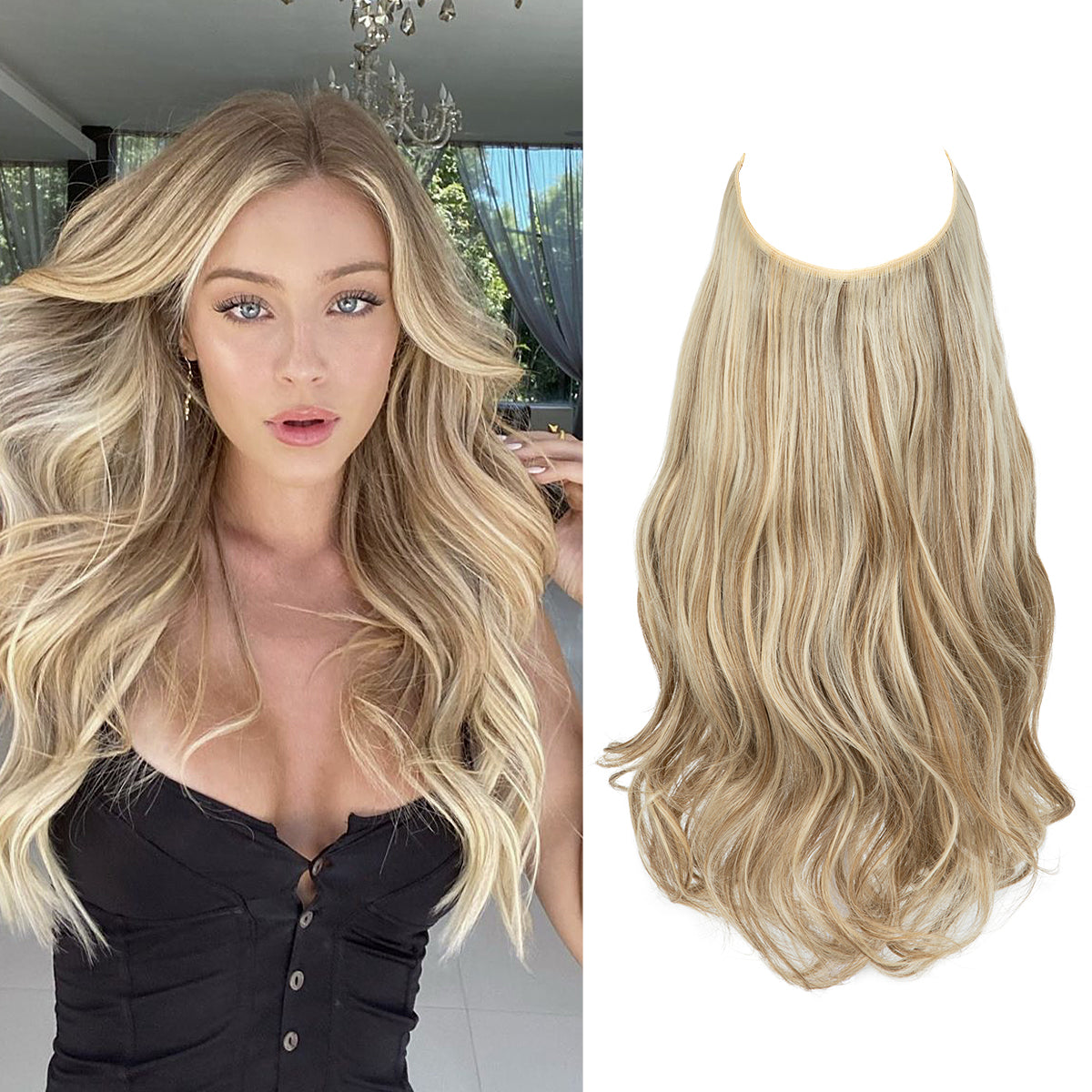
Many people considering tape-in extensions often wonder: are tape-in extensions bad for your hair? This is a completely understandable worry, especially when you’ve invested time and care into maintaining healthy strands or recovering from previous damage.
In this article, we’ll walk you through everything you need to know about the safety of tape-in extensions. We’ll answer the big question - "Are tape-in extensions bad for your hair?" - and explain how they work, what can go wrong, how to prevent damage, and who they’re best for.
Quality of Materials
Do Tape-In Extensions Damage Hair?
Yes, tape-in extensions can damage your hair - but only if they’re not used or cared for the right way. In fact, many people wear them for months with no problems at all. But just like wearing tight shoes can hurt your feet if they don’t fit right, tape-ins can hurt your hair if they’re not used properly. But with the right help and a little effort, you can avoid most of the risks.
The main things that cause problems are:
- Incorrect removal – pulling them off without a remover can rip out your hair
- Frequent repositioning – moving them up too often can put pressure on your roots
- Too much weight – applying too many extensions at once can lead to breakage
- Poor maintenance – using oily products or skipping brushing can cause tangling and stress
- They’re Kinder to Your Hair: Unlike some other extensions, tape-ins don’t use heat or glue on your hair. This means they’re less likely to damage your natural strands. The tape used is gentle and made for skin contact.
- You Can Style Them: Since they’re real hair, you can curl, straighten, braid, and style them just like your own hair (just don’t put heat on the tape part). They hold curls really well and blend naturally into updos and braids.
- Long-Lasting: Once they’re in, they can stay in for 6 to 8 weeks. That means you can wake up every day with amazing hair. Imagine saving time each morning by not needing to add volume or extensions daily.
- Low Maintenance Between Appointments: With proper care, you don’t need to fuss with them daily. They don’t slip out or need constant adjusting. You just brush, style, and go.
- Customizable: Tape-ins come in a variety of colors and lengths, so your stylist can create a custom blend that matches your natural color or adds highlights without using dye.
Now, let’s understand how they actually work.
What Are Tape-In Extensions and How Do They Work?
Tape-in extensions are thin pieces of hair attached to your real hair with a small strip of sticky tape. Think of it like a sticker that holds a little hair made with medical-grade glue. Tape-in extensions are both lightweight and flat against the scalp, while they seamlessly blend with natural hair, which makes them popular among people seeking volume without complicated styling.
Here’s how they work. The medical-grade adhesive comes in thin strips that form part of each extension. Your natural hair gets sandwiched between two tape-in wefts. Then the extension gets secured by pressing the tapes together. The application process is basic, yet it’s better to be performed by experts to achieve proper placement and root protection.
The extensions usually stay in place for several weeks. They’re more comfortable than clips and less damaging than glue or sewn-in extensions if done right. You usually need to get them moved up every 6 to 8 weeks as your hair grows.
So why do people pick tape-ins?
- They look natural
- They’re fast to install
- They last for weeks
- They’re reusable
- They’re Kinder to Your Hair: Unlike some other extensions, tape-ins don’t use heat or glue on your hair. This means they’re less likely to damage your natural strands. The tape used is gentle and made for skin contact.
- You Can Style Them: Since they’re real hair, you can curl, straighten, braid, and style them just like your own hair (just don’t put heat on the tape part). They hold curls really well and blend naturally into updos and braids.
- Long-Lasting: Once they’re in, they can stay in for 6 to 8 weeks. That means you can wake up every day with amazing hair. Imagine saving time each morning by not needing to add volume or extensions daily.
- Low Maintenance Between Appointments: With proper care, you don’t need to fuss with them daily. They don’t slip out or need constant adjusting. You just brush, style, and go.
- Customizable: Tape-ins come in a variety of colors and lengths, so your stylist can create a custom blend that matches your natural color or adds highlights without using dye.
Proper installation and maintenance of tape-in extensions lead to a safe and attractive way to enhance your appearance. The following section will discuss potential issues and provide guidance on protecting your hair during the process.

- You’ll Need Salon Visits: Every 6–8 weeks, you’ll need to go back to the salon to move the tape-ins closer to your scalp as your real hair grows. Otherwise, they can become visible or tangled.
- Not Great for Thin Hair: If your hair is very thin or fragile, the tape might be visible or feel too heavy. Thin hair may not be able to hide the tapes well.
- Be Careful With Heat: You can curl or straighten your hair, but don’t use heat near the tape area. It can make the adhesive melt. Heat protectant is your best friend here.
- Tape Might Show If Applied Wrong: If the stylist doesn’t place them right or your hair is too short, the tape tabs might peek through. That’s why a skilled stylist is key.
- Costs Can Add Up: First-time application can cost $200–800, and reapplication sessions cost around $100–300. Add to that your products and tools.
- You’ll Need to Care for Them: You can’t wash your hair with any shampoo - you’ll need special sulfate-free products. And you’ll need to brush carefully every day to keep your extensions smooth.
- Not for Daily Removal: If you want to take your extensions out every night, tape-ins won’t work. These are semi-permanent and meant to stay in for several weeks.

What Can Go Wrong with Tape-In Extensions?
Tape-ins can cause problems - but only if something’s not done right. Here are the most common issues:
1. Hair Pulling or Hair Loss
If the extensions are too heavy or stuck too close to your scalp, they pull on your real hair. Over time, this can cause traction alopecia - a type of hair loss where hair falls out from too much pulling. It usually shows up near your forehead or where the extensions are glued.
How to avoid it:
- Go to a trained stylist
- Don’t use too many extensions
- Use "single-sided tape" for extra fine hair
- Avoid oil-based products near the tape, as it can weaken the adhesive.
- The hair loses its volume and shape regardless of your styling efforts.
2. Hair Breakage
When tape-ins are removed without using the right glue remover, they might yank out hair with the tape. This can break healthy strands.
How to avoid it:
- Always use a specialized tape-in extension remover
- Let a pro remove them
- Don’t tug or pull on slipping extensions
- Those avoiding hair dye: Tape-ins are perfect for adding color without bleaching your natural hair.
- The hair loses its volume and shape regardless of your styling efforts.
3. Allergies or Itchy Scalp
Sometimes the glue can cause irritation. Itchy scalp, redness, or even rashes can happen if your skin reacts to the tape.
How to avoid it:
- Use professional-grade products
- Ask for a patch test before a full install
- Keep conditioner and oils away from the tape area
- Those avoiding hair dye: Tape-ins are perfect for adding color without bleaching your natural hair.
- The hair loses its volume and shape regardless of your styling efforts.
4. Extensions Falling Out
If your hair is too oily or not cleaned well before applying tape-ins, they can fall out fast. The tape won’t stick properly.
How to avoid it:
- Wash hair with clarifying shampoo before installation
- Avoid conditioner near the roots
- Wait 24-48 hours before getting them wet
- Those avoiding hair dye: Tape-ins are perfect for adding color without bleaching your natural hair.
- The hair loses its volume and shape regardless of your styling efforts.
5. Tangling or Matted Hair
Improper brushing or sleeping with your hair loose can cause tangles around the tape area. These knots are tough to remove and can break your hair.
How to avoid it:
- Brush twice a day with a soft brush
- Hold the hair near the roots while brushing
- Braid your hair before bed
- Those avoiding hair dye: Tape-ins are perfect for adding color without bleaching your natural hair.
- The hair loses its volume and shape regardless of your styling efforts.
6. Dry or Frizzy Hair
The area near the tape can get dry because you can’t apply conditioner close to the roots. Your ends might start to feel rough over time.
How to avoid it:
- Use leave-in conditioner on your ends
- Deep condition between re-installs
- Avoid heat styling near the tape
- Those avoiding hair dye: Tape-ins are perfect for adding color without bleaching your natural hair.
- The hair loses its volume and shape regardless of your styling efforts.
The success of tape-ins depends on proper care for both your tape-ins and your natural hair.
What To Do If Something Goes Wrong
If you already have some of these problems, don’t panic. Here’s what to do:
- For pulling or hair loss: Remove the extensions right away and let your hair rest. A hairstylist or dermatologist can help if you see bald spots.
- For breakage: Get a trim to remove split ends and start deep conditioning weekly.
- For irritation: Remove the tape-ins and treat your scalp with calming products. Try a different kind of extension next time.
- For tangles: Be gentle and use detangler spray or a wide-tooth comb. Never yank at knots.
- The hair loses its volume and shape regardless of your styling efforts.
Taking a break from extensions every now and then helps your natural hair stay strong and healthy.
Who Should Use Tape-In Extensions (And Who Shouldn’t)
Tape-in extensions aren’t one-size-fits-all. They’re great for some, but not the best option for everyone. Knowing your hair needs helps you decide whether tape-ins are the right fit—or if you should try something else.
Tape-ins are a good choice if:
- You want longer, fuller hair that lasts for several weeks
- You only need a few pieces added in (not a full head)
- Your hair is strong enough to handle light tension and regular upkeep
- You’re willing to visit a stylist for professional installation and removal
- The hair loses its volume and shape regardless of your styling efforts.
You should avoid tape-ins if:
- You just need a quick boost in volume for a few days (clip-ins or halo extensions are better)
- You want full coverage all over your head, which can add too much weight and stress
- Your hair is already weak, damaged, or thinning
- You have a sensitive scalp or allergies to adhesives
- The hair loses its volume and shape regardless of your styling efforts.
| Type of Extension | Lasts For | Installation Time | Damage Risk | Best For |
|---|---|---|---|---|
| Tape-In | 6–8 weeks | 1 - 3 hours | Low | Long-term, natural-looking hair |
| Clip-In | 1 day | 5 - 15 minutes | None | Special events or occasional use |
| Halo | 1 day | 5 minutes | None | Easy, quick, no-damage styles |
| Sew-In | 6–10 weeks | 2 - 5 hours | Medium | Thick hair that can handle braids |
| Keratin Bond | 3–5 months | 2 - 6 hours | Medium–High | Very long-term wear |
| Micro Links | 2–3 months | 2 - 6 hours | Medium | Long-term with strand movement |
If you are not sure what extensions work best for you, you can always talk to a professional to help you choose what fits your hair goals best.
Final Thoughts
So, are tape-in extensions bad for your hair?
They don’t have to be. But like anything, they come with risks. If used carefully and with a stylist’s help, they can be safe and stunning. But if you skip steps or ignore warning signs, tape-ins can damage your hair over time.
If you want a lower-risk, zero-commitment option that’s easy, fast, and gentle on your hair, Thathair Halo Hair Extensions might be the better choice. You still get the volume and length you’re dreaming of - just without any of the glue, breakage, or worry.
Whatever you choose, we’re here to help you feel confident, beautiful, and informed every step of the way. Because your hair deserves care, and so do you.
Related Products
Ivory Blonde Wavy
Dark Grey Straight
Bahama Beige Wavy

Josef Mohamed is a Content Marketer and Web Designer with over 6 years of experience.He brings a wealth of knowledge to his work, making him a reliable source for readers interested in practical insights about beauty. His writing style is straightforward, aiming to provide real facts and avoid common myths in the beauty industry.




